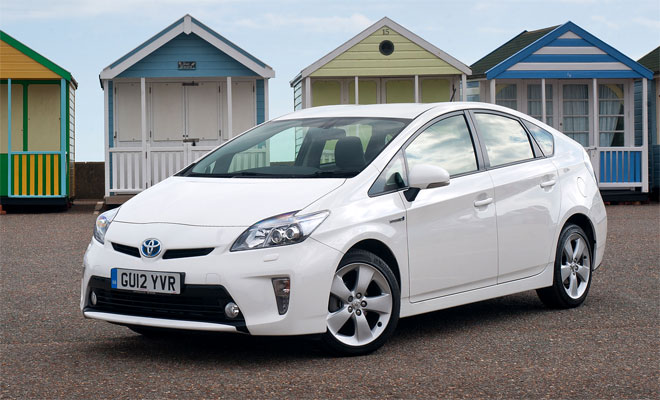by Lem Bingley 
Toyota engineers are currently busy working on the fourth-generation Prius, with a due date towards the end of 2015. The current version 3 Prius arrived in early 2009 and is set to hang around a little longer than the six-year stint of its predecessor.
Reportedly, the upcoming Prius 4 was originally set for a spring debut, but the arrival has been pushed back by six months to enable further work on the car and its complicated petrol-electric innards. Production examples of the next Prius might not arrive until almost a year later, in the autumn of 2016.

When the new car does make its entrance it will probably look like a lot like the current one. The overall shape of the vehicle is very likely to be retained – the Prius being one of the more instantly recognisable vehicles on our roads – but the styling may well be bolder and more distinctive. At least if the giant X stretched across the face of the new Toyota Aygo is any guide. If we’re lucky there will also be echoes of the 2012 NS4 concept car shown in the images above, in its sparkly purple-pink paint.
We can bank on a substantially revised version of Toyota’s Hybrid Synergy Drive, however. As with the last two generations of Prius, the upcoming car is sure to establish a new benchmark in fuel economy for a petrol-powered car of its size. According to reports, at least a 10% improvement in miles per gallon is on the cards, and perhaps a great deal more. Earlier this month Koei Saga, a top bod in Toyota’s powertrain team, told Detroit-based Automotive News that the level of improvement “will surprise everyone”.

We can also safely assume that innovations employed by Prius 4 will quickly find their way into other models. The current Auris Hybrid, Lexus CT 200h and Prius+ MPV are all basically Mk 3 Priuses under the skin, while a trio of smaller cars – the Yaris Hybrid in Europe, Prius C in North America and Prius Aqua in Japan – employ much the same technology, suitably downsized.
A second generation Prius Plug-in is also being developed alongside the plain petrol-electric Mk 4. It seems certain to offer greater range on batteries alone, given that the current Plug-in’s electric range of 15.5 miles is beaten by just about every other car on the market with a mains cable.

The current plug-in employs an energy dense lithium-ion battery, while the standard hybrid uses cheaper but more bulky nickel-metal-hydride cells. Apparently the next Prius will make use of both technologies, perhaps to offer a low-capacity entry level car or a higher capacity battery as an option. Generally speaking, better batteries mean better fuel economy.
Reports also indicate that Toyota’s engineers have been working on a four-wheel-drive implementation of the next Prius’s technology, presumably to power a new Prius-branded crossover or – more likely – a plug-in hybrid off-roader to compete with the Mitsubishi Outlander PHEV. The plug-in Outlander 4x4, featuring two electric motors plus a petrol engine, with a big enough battery for a 25-mile EV range, is currently Europe’s best-selling car with a plug.
Here’s a quick look back over the first three generations of the Prius.

Prius version 3
Production: 2009 to the present
CO2 rating: 89g/km to 92g/km
Combined economy: 70.6mpg to 72.4mpg
Powertrain: 1.8-litre 98bhp petrol engine plus 60kW (80bhp) electric motor
Current value: a new one costs from £21,995, but we found a 62-plate model with 13,000 miles in plush T-Sprit trim at Toyota Prius Barnsley for £16,490, or about £8,800 less than the current list price before totting up options.

Prius version 2
Production: 2003 to 2009
CO2 rating: 104g/km
Combined economy: 65.7mpg
Powertrain: 1.5-litre 76bhp petrol engine plus 50kW (67bhp) electric motor
Current value: reasonable second-generation cars start at about £3,500 but expect to pay around £9,000 for a 2009 car in good condition.

Prius version 1
Production: 2000 to 2003
CO2 rating: 120g/km
Combined economy: 55.4mpg
Powertrain: 1.5-litre 71bhp petrol engine plus 33kW (44bhp) electric motor
Current value: expect to pay from £1,500 to £2,000 for a good one, though choice is tight as there are only about 1,000 first-generation cars currently on the road in the UK.



